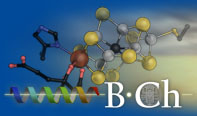Nitrite Channels

Nitrite is a central intermediate in the biogeochemical nitrogen cycle, located at the intersection of nitrification, nitrate ammonification, denitrification and the anammox pathway. To be used as a nitrogen source, nitrite is reduced to ammonium in a six-electron reduction catalyzed by a siroheme-dependent nitrite reductase in the bacterial cytoplasm. Ammonium is then assimilated into the amino acids glutamine and glutamate for use in further biosynthetic processes.
As an anionic species, nitrite requires dedicated transport proteins to cross the hydrophobic barrier of the lipid bilayer. Nitrite channels of the NirC type fulfil this role as part of the nir operon encoding assimilatory nitrite reductase. They are pentameric integral membrane proteins with six transmembrane helices per monomer and constitute the FNT family of membrane transport proteins together with the formate channel FocA. In contrast to FocA, however, NirC is not gated by pH, and it has also no requirement to conduct as a broad range of substrates. NirC is an ion channel of high conductance, such that in addition to structural analysis by X-ray crystallography we are studying the function of the channel by direct electrophysiology of protein reconstituted into planar lipid bilayers. This work is carried out in collaboration with the group of Susana Andrade.
References:
- Lü, W., Du, J., Schwarzer, N.J., Andrade, S.L.A. & Einsle, O. (2013) The Formate/Nitrite Transporter family of anion channels. Biol. Chem., 394, 715-727.
- Lü, W., Schwarzer, N.J., Du, J., Gerbig-Smentek, E., Andrade, S.L.A. & Einsle, O. (2012) Structure and mechanism of the nitrite channel NirC from Salmonella typhimurium. Proc. Natl. Acad. Sci. USA, 109, 18395-18400.

